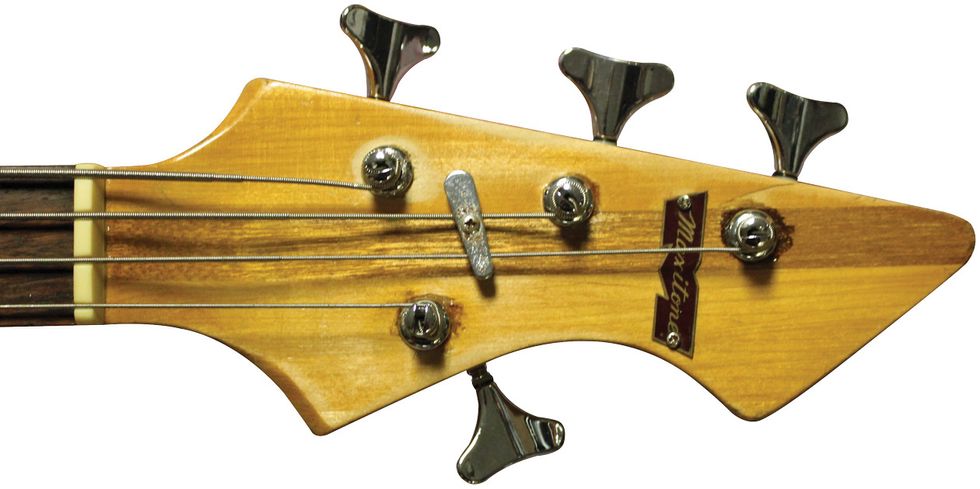I’ve always thought it would be cool to have a family business—especially one that focuses on the collective knowledge passed down from father to son, mother to daughter, and so on. I imagine it would be stressful in a few ways, but when I was a kid I had a number of friends who worked for a family business. And man, those kids just seemed a bit more carefree knowing their futures were mapped out.
I was thinking about family businesses this month because of this crazy electric bass guitar hailing from circa 1965 (Photo 1). This old bass carries the “Maxitone” brand name and can be found in catalogs with the model number 481. (There was also a model 482 that featured two pickups.) The reason this bass is connected to a family businesses is because it was made by the Hoshino family operation in Japan. Hoshino may not be a household name here in the U.S., because we commonly know the company by their primary brand, Ibanez. But Hoshino has been around for a long time—over 100 years now. And while Ibanez-branded electric guitars appear in catalogs from the 1950s, it was back in the early 1960s that Hoshino began making guitars and drums specifically at the Tama factory.
I had the chance to meet with two of the family members who were around in the early days of guitar making. Let me tell you, this was a cool family business! And Yoshiki Hoshino—who goes by Joe—and Yoshitada Hoshino had some pretty fond memories of those days.
When the factory first opened in 1962, many Hoshino family members were there to participate in production and design. As Joe Hoshino put it, they basically created guitars that seemed “cool” to them. It’s pretty obvious the Hoshino electrics were influenced by early English guitar brands, like Burns, because the guitars featured similar cues such as exaggerated horns and segmented pickguards. Later on, however, the Hoshino designs became truly gonzo, like something played by a Scooby-Doo cartoon band.
This 481 bass features some of the early Hoshino-build characteristics, like the “skunk” striped neck, a shapely headstock (Photo 2), a trapezoid neck plate, and finely cured wood. As a player, I find this particular bass shows some quirkiness, as did many of the early Japanese electric guitars. The body features a German carve and the overall design is reminiscent of a viola or cello, but the heavy neck makes this model a bit unbalanced, and just about impossible to play sitting down.
Photo 2
The pickup is a whole other story. It’s punchy and powerful, and measures out at a healthy 10.55k. One cool design feature of the pickup is the blue-sparkle pearloid that can be seen through the chrome grilles of the unit. Many of the early Hoshino pickups were designed in-house and featured fancy pearloid and sparkle accents, making use of leftovers from the drum manufacturing that was happening in the same building.
Alas, guitar making by Hoshino ceased in the mid-’60s, and thus ended a cool period in guitar history. Of course, Ibanez guitars were about to be known worldwide by becoming a true force in the 1970s, but by this time, guitar manufacturing was taking place at other factories like FujiGen Gakki. Hoshino continued to make drums at Tama, of course, but I have to say those early guitar-production years were remembered fondly by the Hoshino boys, as well as the collective guitar-playing youth of the 1960s.
Can you imagine designing and making guitars as your family business? I would have found my nirvana.









![Rig Rundown: AFI [2025]](https://www.premierguitar.com/media-library/youtube.jpg?id=62064741&width=1245&height=700&quality=70&coordinates=0%2C0%2C0%2C0)












 Shop Scott's Rig
Shop Scott's Rig


![Rig Rundown: Russian Circles’ Mike Sullivan [2025]](https://www.premierguitar.com/media-library/youtube.jpg?id=62303631&width=1245&height=700&quality=70&coordinates=0%2C0%2C0%2C0)












































